Are you ready to build your future?
Looking for an inspiring work environment and challenging job? Read more about our vacancies, the colleagues you’d be joining and the application process using the button below. Join 4PS today!


AI is already reshaping construction, moving from simple assistants to autonomous agents. But success depends less on tools and more on strategy, people, and culture. Read more to learn the five pillars for adopting AI effectively.
Artificial Intelligence (AI) is no longer future music. Where the sector only recently spoke about digitalisation and BIM, AI has now entered daily practice. Not as a gimmick, but as a foundation for the future. For companies in construction, installation, and infrastructure, the pressing question is: how can we use AI strategically?
The technology is here, and the opportunities are growing rapidly. Yet success depends less on software itself than on people, processes, and leadership.
Today, many organisations are experimenting with copilots: digital assistants that summarise emails, search through documents, or instantly provide project status from ERP systems. Useful, but still supportive.
The next step is agents: AI modules that execute processes autonomously, such as posting invoices or flagging risks in project planning. Eventually, autonomous agents will handle entire processes without human intervention. AI is therefore not just another IT tool, but a systemic change that touches the core of how organisations operate.
Organisations that succeed with an AI approach it along five pillars, together forming the foundation for responsible and effective adoption.
AI should never be a goal, but a means to an end. The question is not what the technology can do, but what the organisation wants to achieve.
Some construction companies already set bold ambitions, such as “doubling revenue by 2030 with the same workforce.” In a sector facing structural labour shortages, AI can help achieve such goals, provided it is fully embedded in the overall strategy.
A secure, future-proof technology base is essential. Generic AI tools may be accessible, but they pose risks: data can end up in unknown environments. Solutions within a trusted platform ensure that information remains the property of the organisation and complies with privacy and security requirements. In a sector that works daily with sensitive project data, this is a non-negotiable prerequisite.
The biggest challenge is human. Employees wonder if AI will change or replace their jobs, and how reliable the outputs are. Successful adoption, therefore, requires training, guidance, and trust.
Skills like prompting – asking the right questions to AI – are new but teachable. After just a short workshop, many employees realise how AI can simplify their work and begin to suggest new use cases. Culture also plays a role: while younger professionals readily experiment, experienced project leaders may hold on to familiar routines.
Experimentation is crucial. An innovation hub provides space to run pilots and proof-of-concepts, share experiences, and work with technology partners to identify value. Without such a structure, initiatives risk stalling or spreading uncontrollably.
For construction, this is especially relevant. Complex projects and intense collaboration demand innovation tied directly to practice: smarter planning, better risk management, or technicians on site with immediate access to error codes and solutions.
Finally, AI requires a clear governance structure. Many organisations set up an AI board or AI team that makes decisions, assesses risks, and ensures initiatives align with strategy. Industry associations also contribute by providing frameworks and best practices. Governance prevents fragmentation and provides direction in a rapidly changing environment.
The opportunities are significant:
At the same time, challenges remain: employees must learn to remain critical of AI outputs, organisations need to invest in digital fitness, and clear agreements are required on data classification and security. AI also demands a cultural shift in which outdated routines are left behind.
AI in construction is not a passing hype but a lasting shift. The technology is evolving at an unprecedented rate. The question is no longer if AI will add value, but how quickly organisations will build the capacity to work with it effectively.
Companies that now invest in strategy, adoption, innovation, and governance will secure a competitive edge. Those who wait risk falling behind.
As one of the interviewed experts put it: “If you think you can jump in three years from now, you’re already too late.”
Looking for an inspiring work environment and challenging job? Read more about our vacancies, the colleagues you’d be joining and the application process using the button below. Join 4PS today!
Please fill in your name and E-mail to download this file.